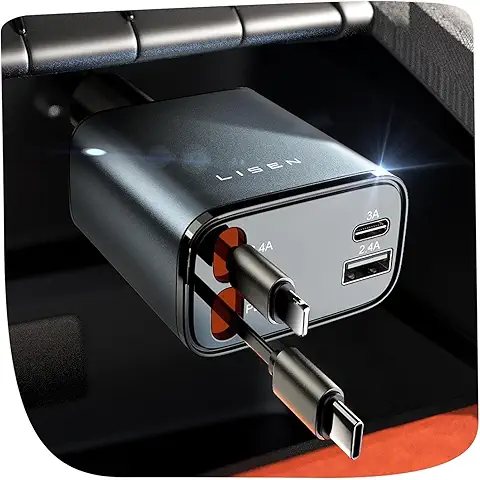Essential Guide to Hiking the Grand Canyon: Trails, Preparation, and Safety Tips


Hiking the Grand Canyon is an event that outdoor enthusiasts all over have to try. With its great vistas, incredible rock formations, and challenging terrain, the canyon offers a unique experience. Still, one should not take this trip lightly. From choosing the best route to be ready for the weather, knowing what's ahead might make all the difference between a successful and a challenging expedition.
This book offers insightful analysis, useful preparation tips, and the best trails of the Grand Canyon, therefore enabling you to completely experience this natural wonder.
Best Trails in the Grand Canyon

Hikers of every ability may find suitable paths in the Grand Canyon. Whether your aim is a stroll along the rim or a challenging drop into the canyon's depths, everyone may find their path.
1. South Rim Trails
Since the South Rim is practical, offers amenities, and boasts amazing views, it is the most frequented area.
Bright Angel Trail
- Length: The Colorado River is up to 9.5 kilometers away (one way).
- Difficulty: From moderate to intense.
- Highlights: Rest areas, seasonal water stops, and breathtaking views of the canyon's levels may be found along this well-kept path.
- Trailhead: Grand Canyon Village, next to Bright Angel Lodge.
This is the ideal path for beginners wishing to explore the canyon without exploring more remote areas. Regular turning sites include the Indian Garden and the 1.5-mile Resthouse.
South Kaibab Trail
- Length: The Colorado River is 6.3 miles away (one way).
- Difficulty: Strenuous.
- Highlights: The South Kaibab Trail, which is well-known for its expansive vistas, is devoid of water stations and shade but rewards hikers with views of Skeleton Point and Ooh Aah Point.
- Trailhead: Close to Yaki Point (only accessible by shuttle).
Because South Kaibab is steeper and more exposed than Bright Angel Trail, experienced hikers choose it.
Getting There
The most well-known and conveniently accessible part of the Grand Canyon among millions of visitors annually is the South Rim. Open all year long, it has resorts, eating choices, campers, and tourist centers among other amenities.
To reach the South Rim by car:
- From Flagstaff, AZ: Take Highway 180, a picturesque road that provides views of Arizona's desert splendor, north for about 90 minutes.
- From Phoenix, AZ: Phoenix Sky Harbor International Airport, which is about a 4-hour drive to the South Rim, is the nearest major airport. The airport offers shuttle services and automobile rentals.
- From Las Vegas, NV: The travel via US-93 and I-40 takes around 4.5 hours.
If you would rather not to drive, there are various shuttle and tour companies that provide transportation to the South Rim from big cities such Phoenix, Flagstaff, and Las Vegas. Starting from Williams, Arizona, the Grand Canyon Railway offers an uncommon and romantic approach to reach the park. The two-hour train ride offers an unforgettable experience over Arizona's high desert.
Once inside, the park offers a free shuttle bus service to help visitors negotiate the South Rim. By linking significant trailheads, views, and visitor facilities, the shuttle makes exploring simple without considering parking—which may be limited during peak seasons.
2. North Rim Trails
Because it is less popular, hiking on the North Rim is more private.
North Kaibab Trail
- Length: The distance to the Colorado River is 14 miles (one way).
- Difficulty: Quite demanding.
- Highlights: From the North Rim, this trail—which passes sites like Roaring Springs and Ribbon Falls—is the only maintained access into the canyon.
- Trailhead: Close by the North Kaibab Lodge.
Part of the well-known Rim-to-Rim climb, North Kaibab links the North and South Rims for an experience on a bucket list.
The North Rim
For those looking to get away from the throngs, the North Rim offers a more isolated and peaceful experience. Because of its higher elevation, which produces colder temperatures and sporadic snow in the off-season, this section of the canyon is accessible seasonally from mid-May to mid-October.
To get to the North Rim via vehicle:
- From Kanab, UT: Using Highway 89A and AZ-67, the travel takes four hours or more.
- From Las Vegas, NV: The trip is five hours, and it is also via Highways 89A and AZ-67.
Though it offers fewer lodging and food choices than the South Rim, the North Rim offers unmatched tranquility and breathtaking vistas. Hikers and campers seeking a more close-up connection with the terrain may find this side ideal.
Its isolated position limits public transit choices, and tourists usually must bring their own car to the North Rim. Since services are few in the surrounding regions, make careful to load up on supplies and gasoline before entering the park.
3. Day Hikes
These day walks provide breathtaking experiences for people pressed for time or seeking less taxing activities:
- Rim Trail: Families and casual hikers would find a largely level, paved path with ideal views.
- Havasu Falls Trail: This walk, which starts outside Grand Canyon National Park, winds to breathtaking blue waterfalls. One must note that licenses are needed.
Preparing for the Hike

A good trek depends mostly on planning. Unlike more conventional paths, the Grand Canyon's steep climbs and descends challenge even experienced hikers. Though the trip down seems somewhat simple, keep in mind that what goes down must inevitably come up.
First and most important is hydration. Physical effort and the arid desert environment may cause dehydration very fast. Each individual should carry at least one gallon of water every day; think about electrolyte supplements. Essential to maintaining your energy are also high-energy foods such as trail mix, energy bars, and dried fruit.
Another really important aspect is dressing correctly. The temperatures of the canyon range greatly from the rim to the bottom. Wear moisture-wicking clothes and layer your dressings. Your protection from the strong sun will come from sunglasses, sunscreen, and a wide-brimmed hat. Non-negotiable are comfortable, robust hiking footwear with sufficient ankle support.
Particularly on less-traveled paths, navigational instruments such a maps or GPS gadgets are very vital. Though the major paths are well signposted, the labyrinthine nature of the canyon makes it simple to become lost.
Making the Most of Your Experience
Hiking the Grand Canyon is about really experiencing the beauty of this natural marvel, not just about the physical trip. Spend some time appreciating the specifics—the way the sunlight dances on the red rock strata, the unusual desert vegetation, and the sound of the Colorado River far below.
If you intend a multi-day climb, think about spending the night at Phantom Ranch, near the foot of the canyon. This rustic lodge provides a comfortable haven for tired trekkers accessible only by foot, mule, or raft. Since reservations are so sought after, plan far ahead.
For day walkers, establishing reasonable objectives is really vital. Unless you are very healthy and ready for a lengthy, demanding climb, never try to reach the river. Rather, try for middle points like Cedar Ridge on the South Kaibab Trail or Indian Garden on the Bright Angel Trail.
Safety Tips to Keep in Mind
Hiking the Grand Canyon should always first concern safety.
On the ascent particularly, pace yourself to prevent overdoing it. Hikers should follow the "rule of thirds," according to the National Park Service: one-third of your time going downslope, two-thirds for ascending back up.
Particularly in late summer during monsoon season, rapid changes in weather conditions are possible. Along with making pathways slick, thunderstorms may cause catastrophic flash floods. Check the forecast always before leaving.
Tell someone your intended route and approximate return time if you are hiking alone. At some rest spots, there are emergency phones; rangers often monitor well-traveled paths.
Final Thoughts
Hiking the Grand Canyon is a once-in-a-lifetime event that tests your body and mind and rewards unmatched beauty. Whether you're strolling along the rim or starting a multi-day trip to the Colorado River, the magnificence of the canyon will stay with you.
With enough planning, respect for the surroundings, and an adventurous attitude, your Grand Canyon climb may be the highlight of a lifetime. Spend some time soaking in the vistas, then let the canyon's eternal beauty motivate you.








